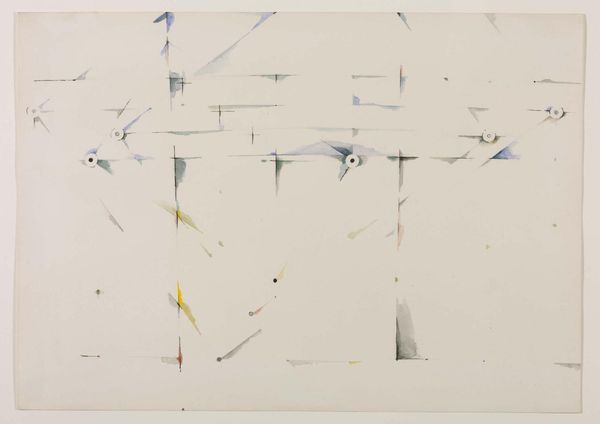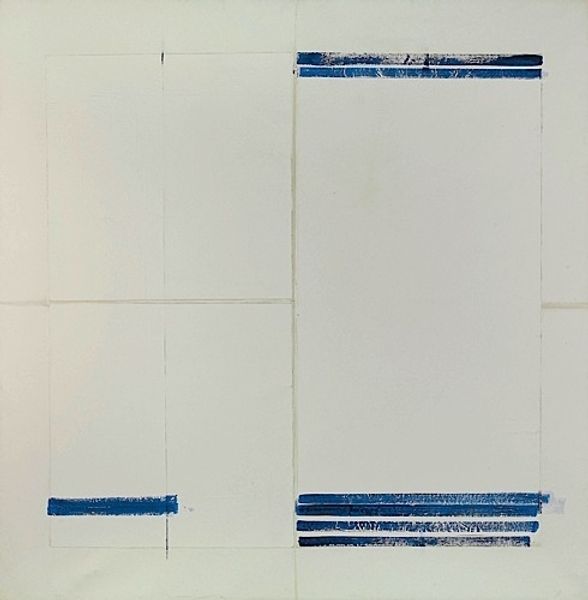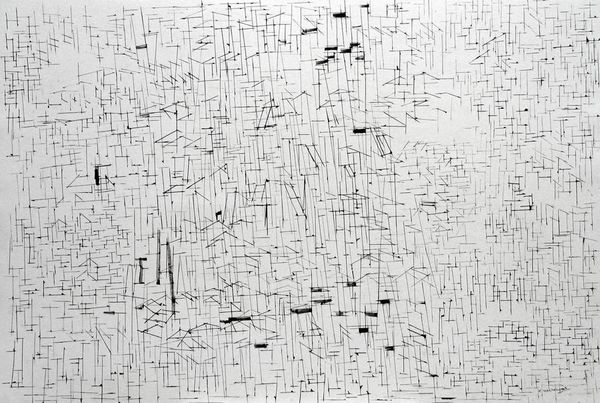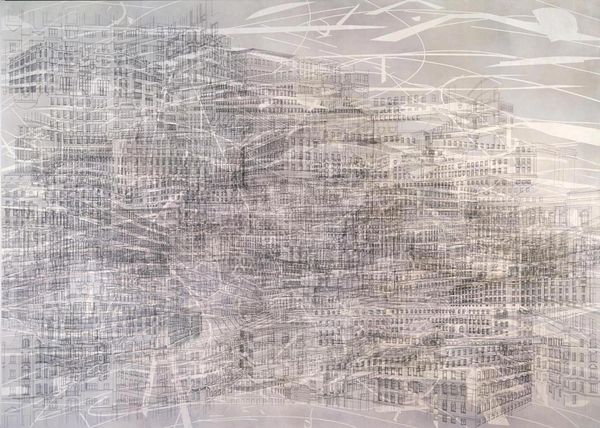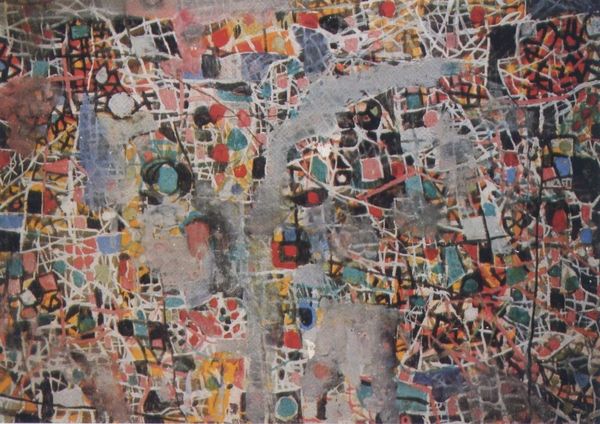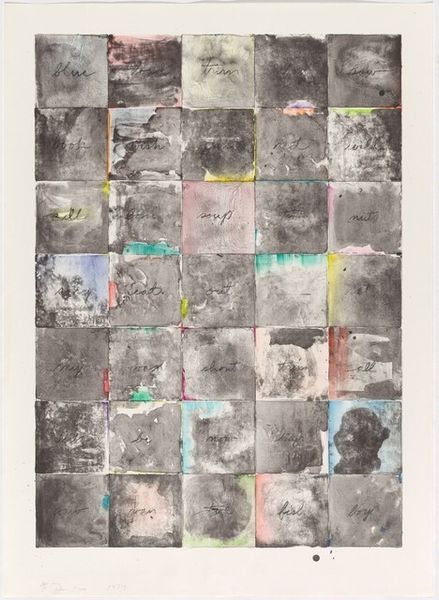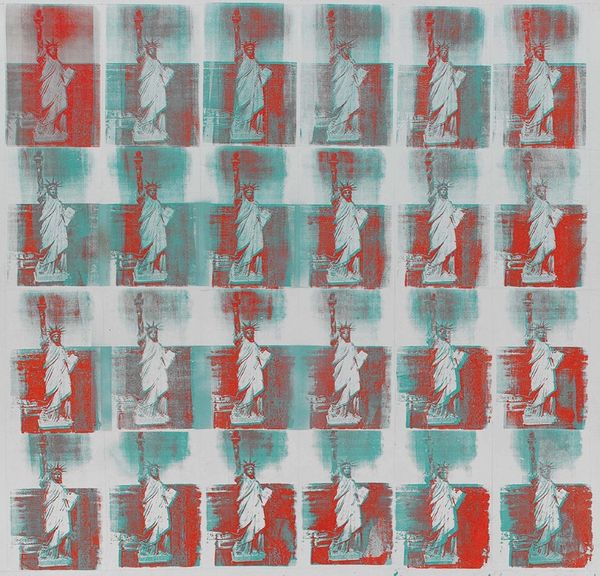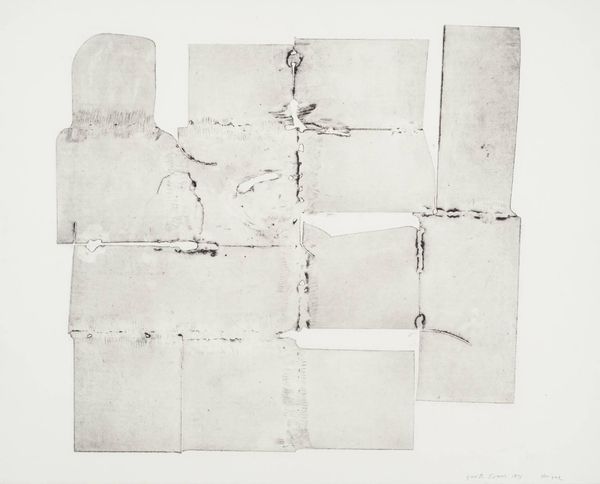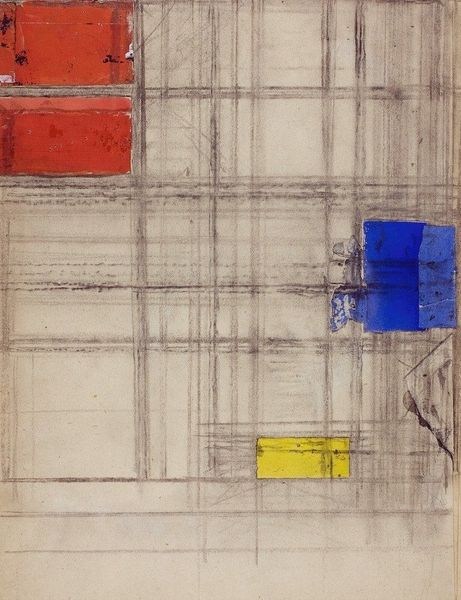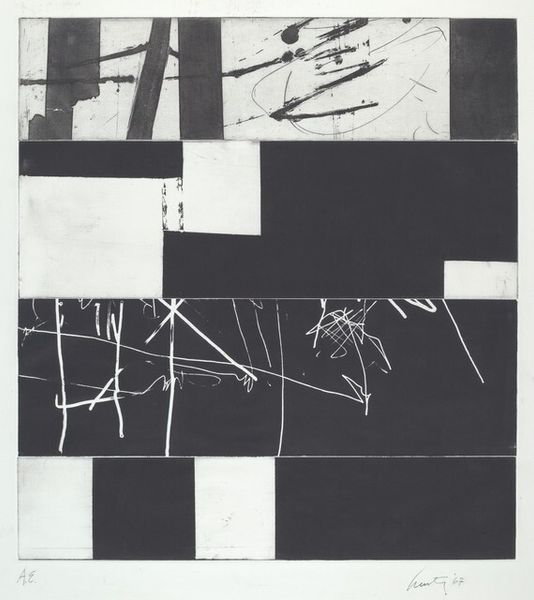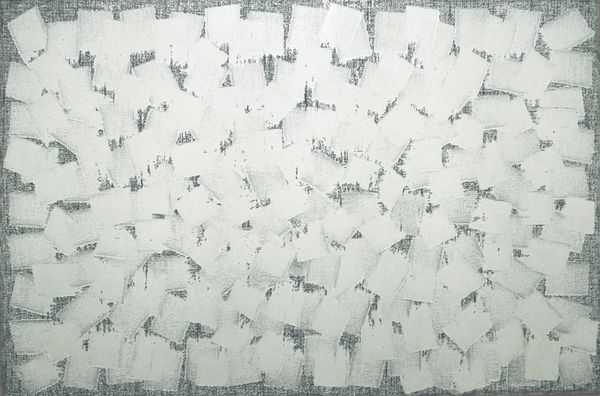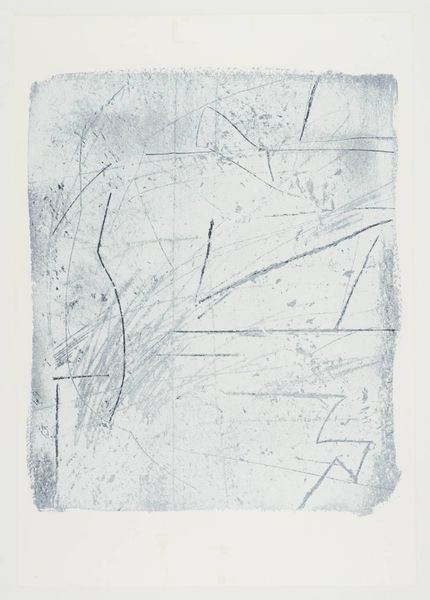
Copyright: 2012 Sam Francis Foundation, California / Artists Rights Society (ARS), NY
Editor: This is an Untitled piece, SFM83-338, created by Sam Francis in 1983 using acrylic paint. The overall impression I get is one of a grid, almost like a window, but with a really handmade quality. It doesn't feel precise; it’s almost fragile. What catches your eye? Curator: The materiality. Look closely at the acrylic. How is it applied? The surface isn't uniform. It is scumbled with variations in the texture, indicating the artist's hand. Note the repeated, almost mechanical application of those square outlines and the splatters of paint disrupt this grid. What does this tension tell you about the labour of producing it? Editor: So you’re saying that the *way* it was made is more important than what it looks like? That the messiness reveals the human labor that often gets erased in abstract art? Curator: Precisely! The splatters disrupt the grid’s supposed order, almost suggesting an industrial process gone awry. This wasn't a clean operation; it was physical and involved. Does it challenge conventional notions of "high art" by foregrounding these aspects of creation? Editor: I see! So, the value isn't just in the aesthetic, but in understanding the choices made with the materials, how it speaks to a dialogue between intentional order and accidental form. Curator: Exactly. We consider not just the visual result, but also the *means* through which the artwork came into being and its relation to labour. It is as much a document of action as it is a composition. It compels us to confront materiality. What do you think about Abstract Expressionism now? Editor: I guess I never considered it this way. Looking closely at process allows me to better comprehend it. Thank you! Curator: Indeed! By emphasizing materials, we unearth fresh dialogues in abstract art, shifting focus from grand gestures to grounded practice.
Comments
No comments
Be the first to comment and join the conversation on the ultimate creative platform.
